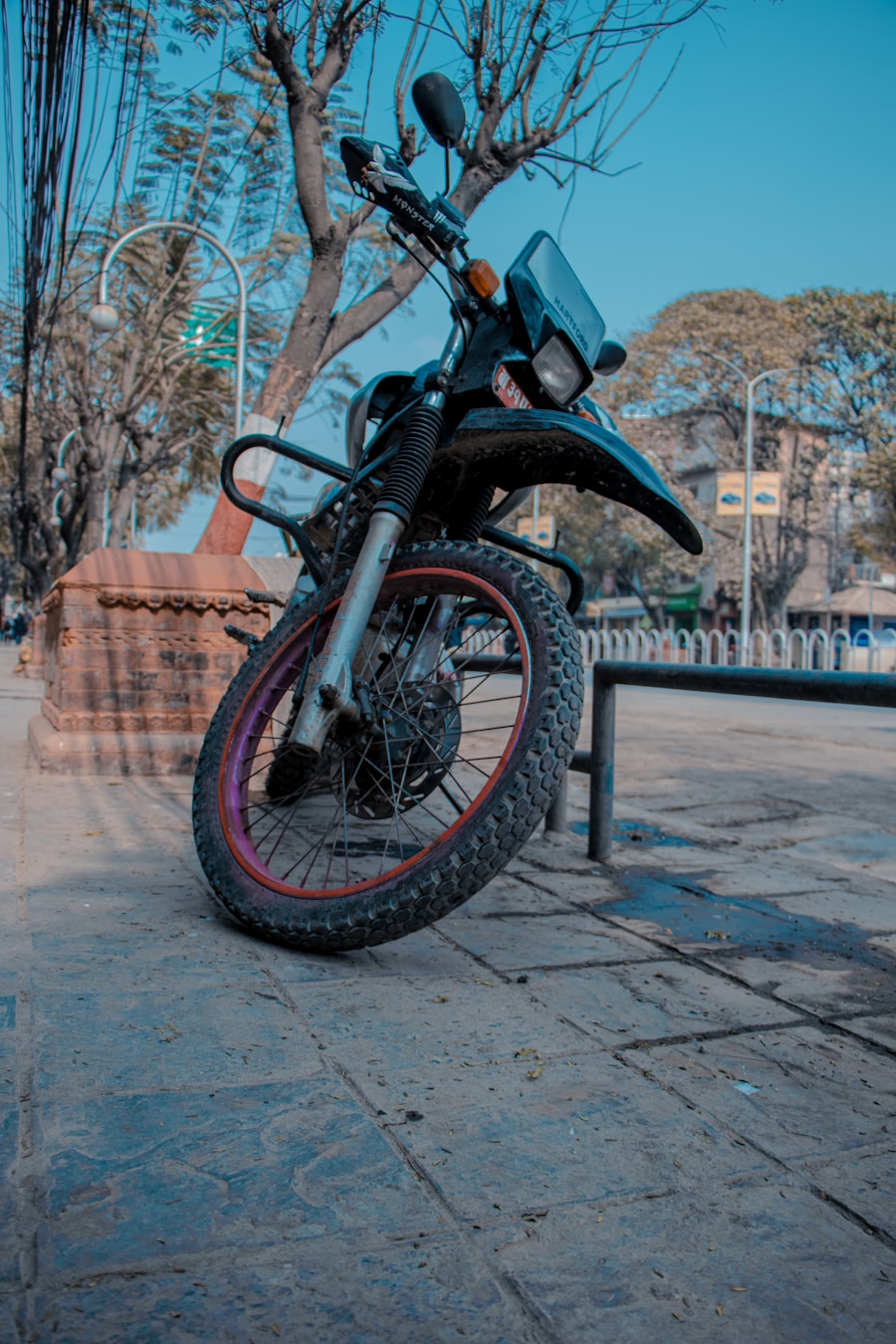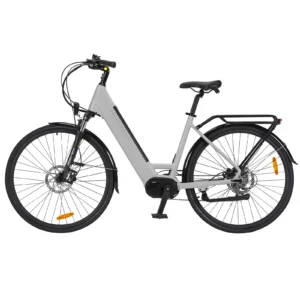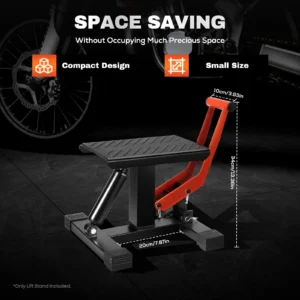Electric bikes, or e-bikes, have surged in popularity over the past decade, offering an eco-friendly alternative to traditional transportation methods. As more individuals embrace this mode of travel, the importance of safety cannot be overstated. Riding an e-bike presents unique challenges and risks that differ from those associated with conventional bicycles or motor vehicles.
The increased speed and weight of e-bikes can lead to more severe accidents if riders are not adequately prepared. Therefore, understanding and prioritizing safety measures is essential for both the rider’s well-being and the safety of others on the road. Moreover, the rise in e-bike usage has prompted a corresponding increase in accidents and injuries.
According to a study published in the journal “Injury Prevention,” e-bike riders are more likely to sustain injuries than traditional cyclists, primarily due to their higher speeds and the potential for collisions with motor vehicles. This reality underscores the necessity for riders to adopt a proactive approach to safety. By implementing effective safety practices, e-bike riders can significantly reduce their risk of accidents and contribute to a safer riding environment for everyone.
Key Takeaways
- Electric bike safety is crucial for preventing accidents and injuries
- Wearing a proper helmet and protective gear is essential for rider safety
- Understanding and following traffic laws and signals is important for safe riding
- Maintaining a safe speed while riding an electric bike is key to avoiding accidents
- Being aware of surroundings and practicing defensive riding can help prevent accidents
Proper Helmet and Protective Gear
Protect Your Head with a Proper Helmet
Unlike traditional bicycles, e-bikes can reach speeds of up to 28 miles per hour or more, which increases the likelihood of severe head injuries in the event of an accident. A well-fitted helmet can significantly reduce the risk of traumatic brain injuries, making it an indispensable piece of equipment for any e-bike rider.
Choose the Right Protective Gear
When selecting a helmet, it is essential to choose one that meets safety standards set by organizations such as the Consumer Product Safety Commission (CPSC) or the American National Standards Institute (ANSI). In addition to helmets, riders should consider wearing other protective gear to enhance their safety on the road. This includes padded gloves, knee and elbow pads, and even reflective clothing to increase visibility during low-light conditions.
Maximize Visibility and Protection
The use of padded gloves can help absorb shock during falls, while knee and elbow pads provide additional protection against abrasions and fractures. Reflective gear is particularly important for e-bike riders who often share the road with larger vehicles, as it makes them more visible to drivers. By investing in high-quality protective gear, riders can significantly mitigate the risks associated with e-biking.
Understanding Traffic Laws and Signals

Navigating urban environments on an e-bike requires a solid understanding of traffic laws and signals. E-bike riders are subject to the same rules as traditional cyclists, which means they must adhere to stop signs, traffic lights, and lane markings. However, many riders may not be fully aware of specific regulations that pertain to e-bikes, such as where they are allowed to ride and whether they can use bike lanes or sidewalks.
Familiarizing oneself with local laws is crucial for ensuring compliance and avoiding potential fines or accidents. Additionally, understanding traffic signals is vital for safe riding. Riders should be trained to recognize and respond appropriately to various signals, including hand signals used by cyclists to indicate turns or stops.
For instance, extending the left arm horizontally indicates a left turn, while bending the left arm at a 90-degree angle signals a right turn. These signals not only communicate intentions to other road users but also enhance overall safety by promoting predictability in riding behavior. By mastering traffic laws and signals, e-bike riders can navigate their surroundings more confidently and safely.
Maintaining a Safe Speed
| Speed Limit |
Percentage of Accidents |
Percentage of Fatalities |
| 30 mph |
45% |
25% |
| 40 mph |
30% |
20% |
| 50 mph |
20% |
15% |
| 60 mph |
15% |
10% |
Speed management is another critical aspect of e-bike safety. While the ability to travel at higher speeds is one of the appealing features of e-bikes, it also poses significant risks if not managed properly. Riders should be aware of their speed relative to their surroundings and adjust accordingly based on factors such as traffic density, road conditions, and weather.
For example, riding at high speeds in congested urban areas can lead to dangerous situations where quick reactions are necessary to avoid collisions. Moreover, many e-bikes come equipped with speed limiters that can help riders maintain a safe pace. These devices can be particularly useful for novice riders who may not yet have developed a strong sense of speed control.
Riders should also be mindful of their own comfort levels; if they feel uneasy at higher speeds, it is advisable to slow down until they gain more experience and confidence. Ultimately, maintaining a safe speed not only protects the rider but also ensures the safety of pedestrians and other road users.
Being Aware of Surroundings
Situational awareness is paramount for e-bike riders who wish to navigate safely through various environments. This involves being conscious of not only one’s immediate surroundings but also anticipating potential hazards that may arise. For instance, riders should always be on the lookout for pedestrians crossing streets unexpectedly or vehicles making sudden turns.
Additionally, environmental factors such as potholes, debris on the road, or wet surfaces can pose significant risks if not recognized in advance. Riders should also practice defensive riding techniques by maintaining a safe distance from other vehicles and being prepared for sudden stops or changes in traffic patterns. This includes keeping an eye on mirrors and checking blind spots before making maneuvers such as lane changes or turns.
Engaging in active observation allows riders to react promptly to any unforeseen circumstances, thereby reducing the likelihood of accidents. By cultivating a habit of situational awareness, e-bike riders can enhance their safety and that of others around them.
Regular Maintenance and Inspections

Regular maintenance and inspections are essential for ensuring that an e-bike operates safely and efficiently. Just like any other vehicle, e-bikes require routine checks to identify potential issues before they escalate into serious problems. Riders should develop a maintenance schedule that includes checking tire pressure, inspecting brakes, and ensuring that lights and reflectors are functioning correctly.
Neglecting these aspects can lead to mechanical failures that compromise safety during rides. Additionally, battery maintenance is crucial for electric bikes since a malfunctioning battery can affect performance and range. Riders should regularly inspect battery connections for corrosion or damage and ensure that batteries are charged according to manufacturer guidelines.
Keeping an eye on battery health not only prolongs its lifespan but also ensures that riders have sufficient power for their journeys. By committing to regular maintenance and inspections, e-bike riders can enjoy a safer riding experience while maximizing the longevity of their equipment.
FAQs
What are some general electric bike safety tips?
Some general electric bike safety tips include wearing a helmet, following traffic laws, using lights and reflectors, and being aware of your surroundings.
Why is wearing a helmet important when riding an electric bike?
Wearing a helmet is important when riding an electric bike because it can protect your head in the event of a crash or fall, reducing the risk of serious injury.
What are some important traffic laws to follow when riding an electric bike?
Important traffic laws to follow when riding an electric bike include obeying speed limits, yielding to pedestrians, using hand signals for turns, and riding in the same direction as traffic.
Why is it important to use lights and reflectors on an electric bike?
Using lights and reflectors on an electric bike is important to increase visibility, especially when riding in low light conditions or at night, which can help prevent accidents.
How can riders be more aware of their surroundings when riding an electric bike?
Riders can be more aware of their surroundings when riding an electric bike by staying focused, avoiding distractions such as using a phone, and regularly checking mirrors and blind spots.
 Likctt 320Ah 3.2V LiFePO4 Battery Cells
1 × 280,01 €
Likctt 320Ah 3.2V LiFePO4 Battery Cells
1 × 280,01 €  Electric Bicycle 700C 29 Inch Trekking Bike E-City Bike with 43V 12Ah Lithium Battery for Long Range up to 100 KM, 250 W Motor
1 × 1 192,07 €
Electric Bicycle 700C 29 Inch Trekking Bike E-City Bike with 43V 12Ah Lithium Battery for Long Range up to 100 KM, 250 W Motor
1 × 1 192,07 €  Lift Stand Motorcycle Motorbike Hydraulic w/150 kg Capacity Motorcycle Lifting Platform, Heavy Duty Maintenance Jack
1 × 88,72 €
Lift Stand Motorcycle Motorbike Hydraulic w/150 kg Capacity Motorcycle Lifting Platform, Heavy Duty Maintenance Jack
1 × 88,72 €  VD61 Display for Bafang Middle Motor CAN Bus E-Bike Display Compatible with M625 M325 M225 M200 M400 M500 M600 M620 M420 M510
1 × 88,30 €
VD61 Display for Bafang Middle Motor CAN Bus E-Bike Display Compatible with M625 M325 M225 M200 M400 M500 M600 M620 M420 M510
1 × 88,30 € 


